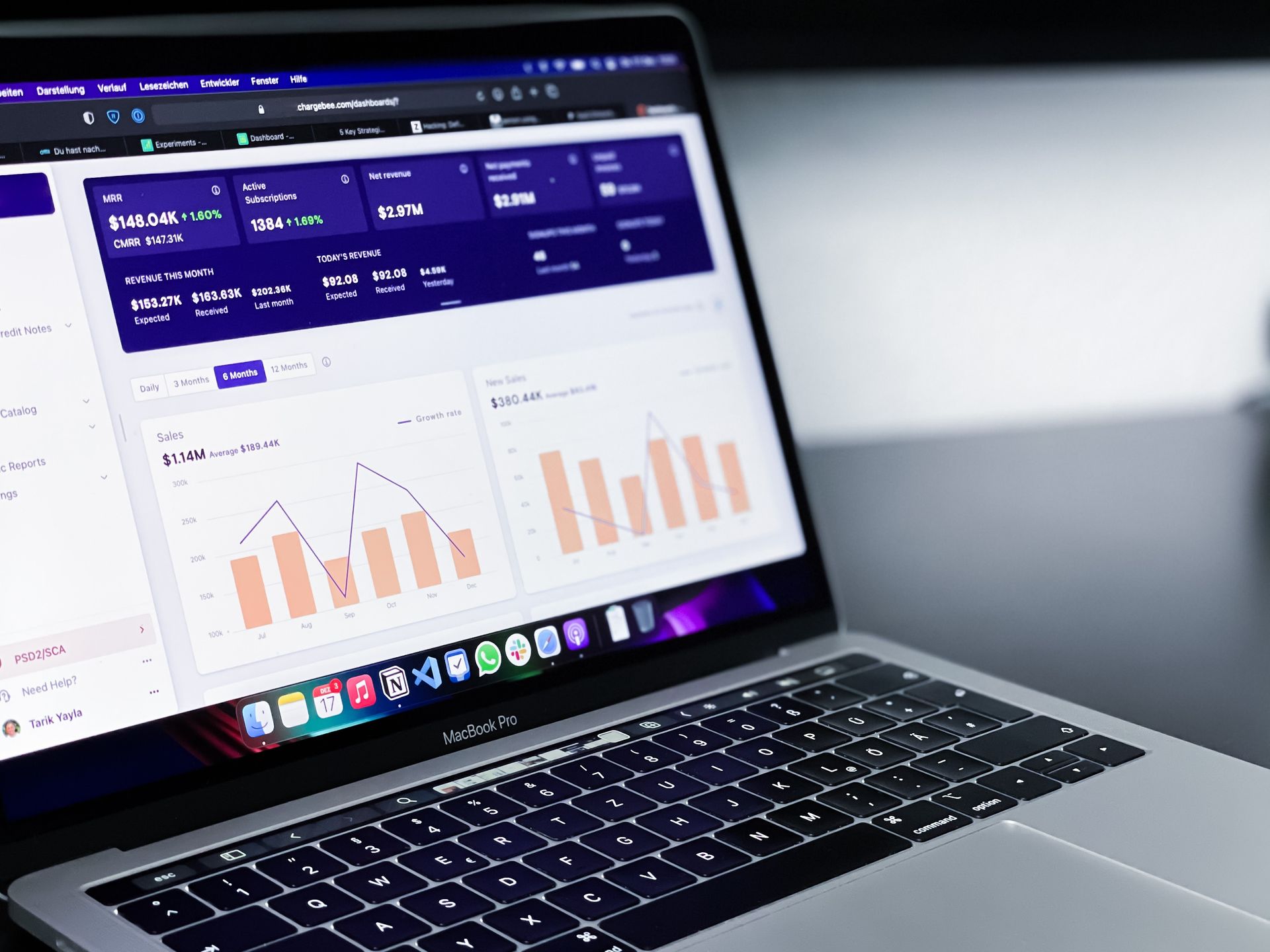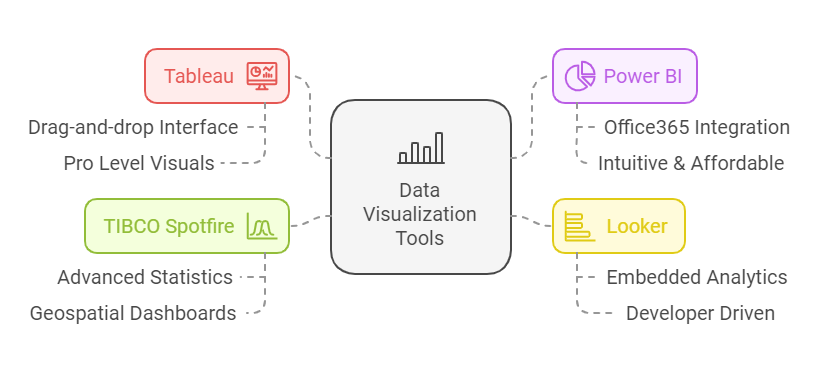Data Visualization Consulting: Transforming Information into Insight
Data Visualization Consulting: Transforming Information into Insight

Executive Summary
In an age where data drives decision-making, effective data visualization is a critical skill for organizations aiming to extract meaningful insights from their information. Data visualization consulting empowers businesses to present complex datasets in clear, actionable formats, enhancing decision-making, communication, and strategy development.
One of my favorite texts on the subject is Dona M. Wong’s "The Wall Street Journal Guide to Information Graphics." I frequently reference this publication when working through visualizations for clients. This article uses that text as a reference and explores the essential elements of data visualization consulting, including its benefits, methodologies, tools, and best practices.
1. The Importance of Data Visualization
1.1 Why Visualize Data?
Data visualization converts raw data into a visual context, such as charts, graphs, and maps. This transformation helps:
- Simplify Complexity: Visual tools distill intricate datasets into digestible insights.
- Enhance Retention: Studies show visuals improve comprehension by 400% compared to text alone.
- Drive Decision-Making: Decision-makers can identify trends, outliers, and patterns faster.
1.2 Real-World Applications
Data visualization consulting has proven invaluable in various sectors:
- Healthcare: Visualizing patient outcomes to improve treatment protocols.
- Finance: Monitoring investment performance through dashboards.
- Retail: Analyzing consumer behavior for targeted marketing.
Dona M. Wong emphasizes clarity and simplicity: “Avoid clutter. Simplicity is not about removing information but about making it accessible.” This principle is foundational for effective consulting.
2. The Consulting Process
2.1 Discovery Phase
Effective consulting begins with understanding the client’s needs:
- Objective Identification: Clarify goals, such as trend analysis or performance tracking.
- Audience Analysis: Design visuals tailored to the end-users’ technical expertise.
- Data Audit: Assess the quality, completeness, and relevance of datasets.
2.2 Design and Development
During this phase, consultants:
- Select Visualization Types: Choose charts or graphs that best represent the data.
- Wireframe Prototypes: Create mockups to align with client expectations.
- Incorporate Feedback: Refine designs through iterative reviews.
2.3 Implementation and Training
To ensure sustainability:
- Deploy Dashboards: Implement interactive tools such as Power BI or Tableau.
- Train Teams: Equip clients with the skills to maintain and update visuals.
- Iterate: Once people are able to interact with your dashboards, they will undoubtedly have thoughts on things to add, work with them in an iterative fashion to craft it into the perfect business tool.
3. Key Tools and Technologies
Popular Platforms
Data visualization consultants use a variety of tools, each suited for specific needs:

Tool selection is secondary to the developer's ability to craft a compelling story with the dashboard. While different tools offer unique features, the true power of data visualization lies in how effectively the narrative connects with the audience and drives actionable insights.
“Choose the right chart type. A bar chart is not a one-size-fits-all solution,” Wong advises. Consultants must select tools that align with the specific narrative.
4. Best Practices in Data Visualization
4.1 Principles of Design
Consultants must adhere to design fundamentals:
- Clarity Over Complexity: Use clear labels and minimal distractions.
- Consistent Scales: Avoid misleading viewers with disproportionate axes.
- Logical Layouts: Align visuals with the natural reading flow.
4.2 Avoiding Pitfalls
Common errors include:
- Overloading with Data: Excessive details obscure key messages.
- Inappropriate Colors: Poor color choices can mislead or confuse.
- Lack of Context: Visuals must provide explanatory notes where needed.
Avoid overloading dashboards with excessive color. Use color and contrast strategically to guide attention and emphasize the story your visualization aims to convey.
5. Maximizing Value from Data Visualizations
Companies can unlock greater value from their data visualizations by focusing on the following strategies:
- Define Clear Objectives: Establish what decisions or actions the visualization should support.
- Tailor to the Audience: Design dashboards that resonate with the intended users—executives, analysts, or operational teams.
- Emphasize Storytelling: Use data to tell a compelling story that aligns with business goals and fosters engagement.
- Foster Interactivity: Implement interactive elements, such as filters and drill-downs, to empower users to explore data independently.
- Iterate and Improve: Regularly update dashboards based on feedback and evolving business needs to maintain relevance.
By concentrating on these principles, businesses can ensure that their visualizations drive insights and actionable outcomes, turning data into a strategic asset.
Conclusion and Actionable Takeaways
Data visualization consulting bridges the gap between raw data and actionable insight. By applying the principles of simplicity, clarity, and intentional design, businesses can:
- Improve Decision-Making: Leverage insights for strategic planning.
- Enhance Communication: Present data in formats accessible to diverse audiences.
- Gain Competitive Advantage: Respond faster to market trends.
Key Takeaways:
- Understand Your Audience: Tailor visuals to their knowledge level.
- Select the Right Tools: Match tools with business needs.
- Focus on Simplicity: Eliminate unnecessary elements.
- Tell a Story: Build visuals that create a narrative for stakeholders.
- Iterate Designs: Continuously refine based on feedback.
- Invest in Training: Ensure long-term usability.
As Dona M. Wong eloquently states, “Good design is about making data useful, not just beautiful.” By embracing these principles, organizations can unlock the full potential of their data.
At Brewster Consulting Group, we recognize that managing data can be a daunting task for small and mid-sized enterprises. Allow us to assist you in harnessing the potential of operational intelligence! Reach out to one of our specialists today to refine your data strategy, optimize your processes, and establish solid governance. Ready to cultivate data analysis and propel scalable growth? Your journey begins right here!











